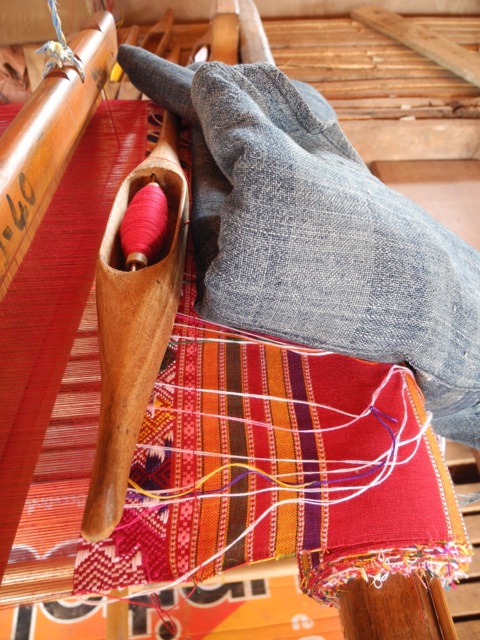Get back to nature and head north from Luang Prabang. Laos again gets rustic and shows off stunning limestone karsts towering over the chocolatey, rainy season, fast flowing and debris carrying rivers. Then there are the various ethnic minorities - over 160 - plowing fields and continuing their timeless traditions.
Laos is blessed with mountains, forests and rivers covering most of the land. Unfortunately due to its potential for hydroelectricity, illegal logging and slash and burn agriculture, this pristine landscape is in danger of losing its biggest asset. I just hope that it never happens!
In all of Southeast Asia, Laos has had the most beautiful vistas and nature that neighboring countries seem to have lost. Maybe it's also just the nature of the Lao, who are the most laid back people of the region. Our Khmu guide while visiting the villages of Luang Nam Tha expressed that he preferred the water buffalo to the machine powered tiller. Why? The buffalo gets tired and needs to take a rest, giving the farmer a break from working the rice fields. Someone shared a saying expressing the differing work ethics of southeast Asians: "The Vietnamese plant the rice, the Cambodians watch it grow, and the Lao listen to it grow." There seems to be some truth to that saying, and maybe it also saved Laos from being hyper-developed.
Our first stop north was in the quiet but starkingly, gorgeous town of Nong Khiaw. Again, those striking karsts, the Nam Ou gushing, and villages tucked beside the river.
We then proceeded north to the bizarre, dusty, Chinese border-like town of Oudomxay. We felt a bit scammed by the local tourist office stand in tour guide who charged us nearly $100 for a mediocre day tour of a local Khmu village, a few local temples, and a swanky hotel's hot springs. Even more surreal than the town itself was sadly witnessing a stunned Muang La village where a terminally ill woman had taken her life in the home right above where we were eating lunch.


Then there's the eco destination of the north: Luang Nam Tha. Every traveler headed north ultimately makes a stop here. Trekking through villages and the national park, staying in cheap lodgings and eating at the delicious night market. Easy day trips to Muang Sing if you haven't had your fill of ethnic minorities. They won't feel as authentic as northern Vietnam's ethnic communities, but you'll get a general idea how each of the four major minorities live.
We were even fortunate enough to have met a Belgian couple with 2 young children who were willing to join us in visiting some of the villages in the area.
The Markets
Not as colorful as their African cousins, but so much more to eat! Well, to be honest, some things were more edible than others.


 |
| Hooves or tails, no part wasted. |
 |
| Or maybe a head? |
|
 |
| Frogs by the dozen |
 |
| Our market lunch |
The People
You won't be able to see all of the 160 ethnic minorities that inhabit Laos, but you'll get a feel for the most common ones: Khmu, Akha, Lenten and Yao/Mien. Unlike many of the minorities in northern Vietnam, they've shed many of their traditional ways. For practical and financial reasons, they've replaced thatched roofs with aluminum and beautiful traditional handmade garments with western threads.
Khmu
Ahka
 |
| Distributing Big Brother Mouse books after a read aloud |
 |
| One who wanted more than one book! |
 |
| Reusing |
Lenten
 |
| Weaving cotton to be dyed with indigo |
|
Yao or Mien



























































No comments:
Post a Comment